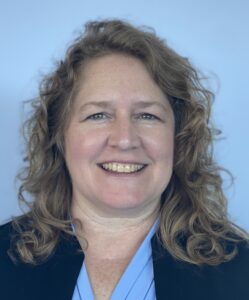“Is anyone here a gardener?” asked Gita Gulati-Partee of OpenSource Leadership Strategies. I raised my hand, thinking about my sugar snap peas trailing their way up the cages and the numerous weeds threatening to overtake them.
“In Durham, which is in the Piedmont region of North Carolina, before any seeds get planted, gardeners often have to dig out the hard clay and add more hospitable soil,” Gita continued. “Likewise, what is in the soil of your work that you may need to dig out to allow the new seeds you plant to grow and thrive? What are the spoken and usually unspoken notions operating in your organization about things like efficiency, effectiveness, scale, risk?”
As a former program officer, I sometimes skipped past the important relationship-building of the work in the name of efficiency. Funders often talk about risk in deciding on a grant, when there is very little risk to the foundation who holds all the assets. Virtually all the risk lies with the nonprofit organization, who may have to lay off staff or close its doors without that grant. And don’t even get me started on foundations who only fund a small percentage of overhead expenses, contributing to the infamous “nonprofit starvation cycle.” It is way past time to dig out these outdated ideas that have harmed nonprofit organizations and bring in fresh soil and new ideas. At the 2025 GEO Learning Conference, I was introduced to many important ideas that are on the forefront of the philanthropic sector. Now, I plan to get busy with digging out that old clay, adding the new soil and planting the seeds of a future that is just, equitable and fair for all.
Here are a few of the highlights for me:
- Consent-based governance models – led by Gita with Circle Forward and Borealis Philanthropy’s REACH program, the session was called, The Alchemy of Consent and the Fractal Nature of Change: Lessons from Racial Equity to Accelerate Change. During this time, we discussed learning from ecology. For example, coral reefs die when the water temperature rises too high. The warm water causes them to go outside of their “zone of tolerance.” Too often philanthropy follows a “mechanistic” way of doing things, a carryover from the corporate world – one that prefers a top-down approach, power over instead of power with, efficiency over relationships. A consent-based model puts the people most affected at the center of decision-making. I still need to learn more about this to fully understand it, but I was intrigued.
- Asset framing – led by Trabian Shorters with speakers from several foundations putting this into practice. How would I like to be defined by my worst qualities? I think for a moment of my shadow qualities and shudder. Yet, that is exactly how we label communities where we are working – based on crime statistics, poor conditions of housing – conditions that were caused by broader systemic issues. What if we instead invested in the aspirations of those communities, building on the experience, creativity, wisdom and strength that are held there?
- Resilience in philanthropy – led by Allison Scott, director of Impact & Innovation at Campaign for Southern Equality shared lessons in bravery. Allison shared her personal story of coming out as a trans woman early in life and facing attacks on her existence. In response to the attacks on the trans community across the nation and especially the South, Campaign for Southern Equality launched the Trans Youth Emergency Project and has helped over 1,200 families with over $800,000 for gender-affirming care. Thank you Allison and Campaign for Southern Equality – you are my inspiration!
- Positive pressure of time – I don’t know about you, but I mostly feel that time is not on my side. Every day brings a long list of to dos and not enough time to do them. Instead of working against this finite sense of time, what if we lean into it and embrace it? This was the topic of The Positive Pressure of Time: Dreaming, Learning and Doing with an End Date in View. Dara Eskridge of Invest STL and Leslie Peters of Elements Partnership shared about the 20-year lifespan of an effort to strengthen communities in St. Louis, Missouri. By mapping out the phases of this lifespan, the organization worries less about sustainability and more about experimentation, lessons learned and building the infrastructure to keep the work going after it is gone. I found this session stimulating to think about my own life. What if I mapped out my remaining work years? What can I accomplish in this time? How can I support others to carry the work forward?
- Spending for purpose, not perpetuity – The need for new practices in philanthropy was echoed by Dimple Abichandani who just released the book, A New Era of Philanthropy: Ten Practices to Transform Wealth into a More Just Future. It is time to recognize that the wealth of philanthropy exists through the exploitation of labor and destruction of the environment. Distributing only 5% in grants, while the remaining 95% of the assets sits idle or worse, invested in companies that are making things worse, is no longer acceptable. Moving the assets and the decision-making to communities that are most affected is a way forward to address the multiple crises. As I write this, Bill Gates has announced that the Gates Foundation will give away $200 billion over the next 20 years in a plan to spend down. If one of the richest people in the world can share the wealth more quickly, we can all do better.
- Just Transition Investing – “Wealth is built off of stolen land, stolen labor. I am tired of burying people and people self-medicating and being eaten up. Either you are in the business of repair or you are not.” Camryn Smith, co-founder and executive director of Communities in Partnership. Camryn spoke her powerful truth and dropped the mic at the end of a session led by Justice Funders and Stupski Foundation, Shifting Paradigms, Sharing Power and Flipping the Script: Emerging Lessons on Just Transition Investing. The vast majority of foundation assets (95%) are often invested in the stock market and may be contributing to the problems that the grantmaking (5%) is trying to address. For example, a funder grants to affordable housing solutions while investing in real estate speculation that drives up the costs of housing for working families. Justice Funders is charting a course for funders to align their assets to their values and Stupski Foundation shared about several efforts to do just that.
- Leadership grounded in love – The closing session engaged writer, adrienne maree brown, and Chi-Ante Singletary Jones, co-founder and chief reparations officer for Cypress Fund, in a beautiful conversation. They shared some words of wisdom for funders:
- learn from the Maroon communities who found a way to survive in the swamp
- when we break away, culture becomes what we do; culture is how we keep our humanity alive
- shift strategies from transactional to relational
- believe that solidarity is mutual transformation
- instead of rock stars, look for earthworms – those who are tending the soil in their communities
And that my friends, is how it all came back full circle back to the garden. I came away inspired from the conference. As any gardener knows, it takes more than inspiration – it requires sweat and dirt under the fingernails to bring about the harvest. I invite you to join me in taking these ideas and putting them into action. Now, time to go water the garden!
—————————————————-

